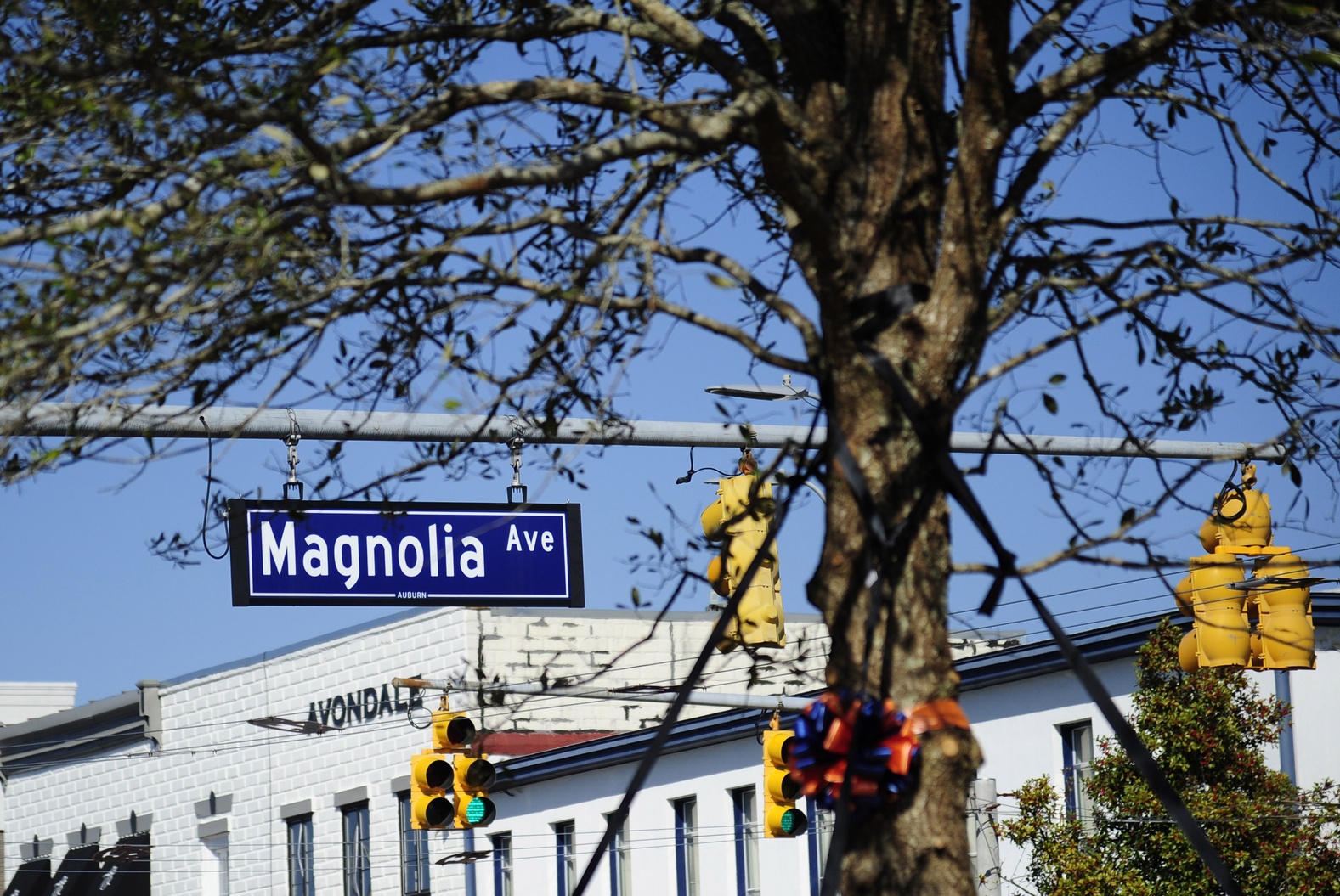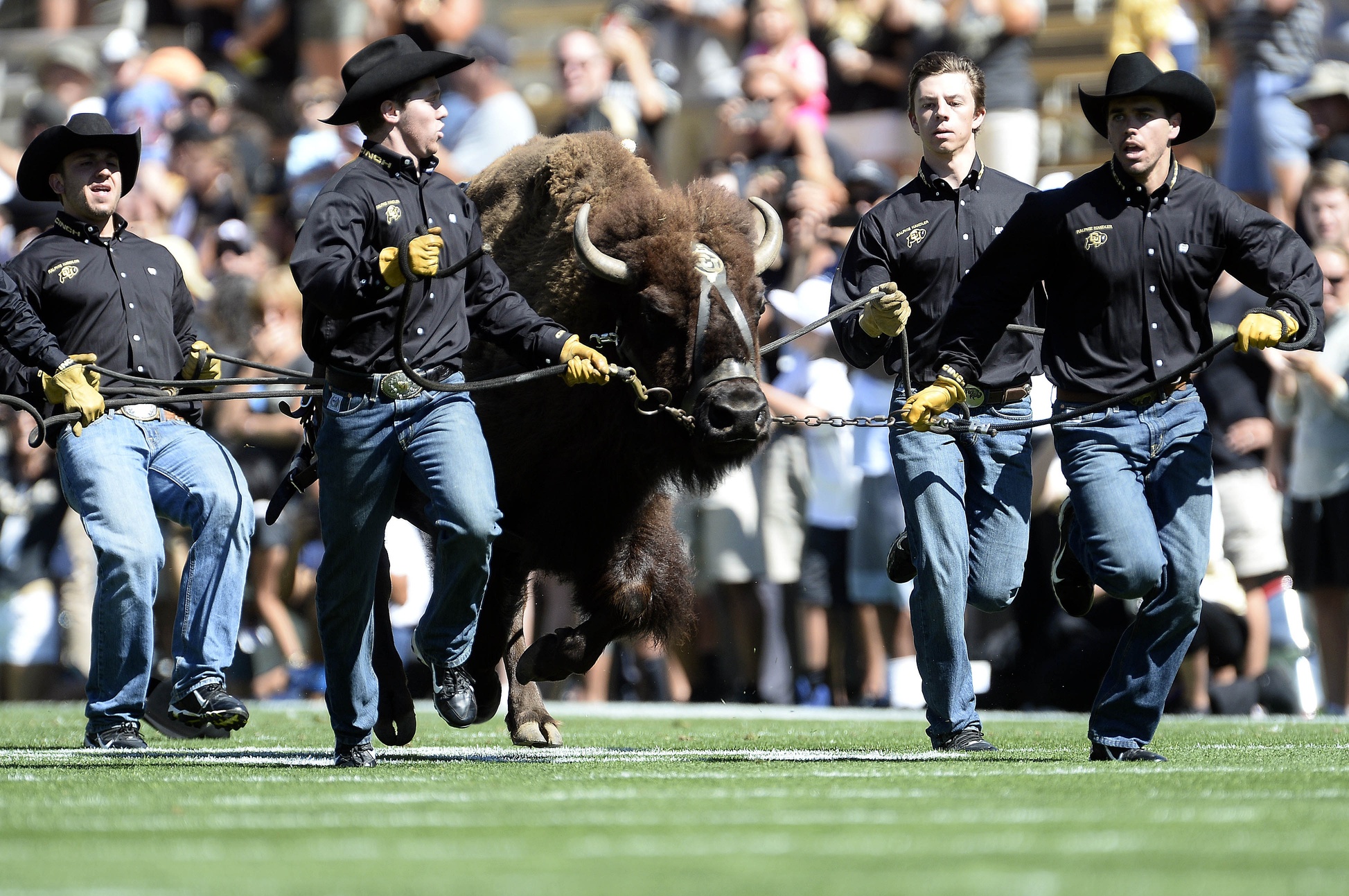College football has not cornered the market on scandals in sports. But at minimum it’s one of the pillars of the house.
We’ve taken the time to identify the 25 biggest scandals in college football history. Our list is weighted toward the more recent, in part due to more saturated media coverage.
Previously, we revealed Nos. 25 to 16, including “The Nightmare of Steroids” at South Carolina in the 1980s and several memorabilia-for-money investigations involving recent SEC stars.
RELATED: Top 25 scandals in college football history, Part I
Today we’re revealing seven more scandals, including two centered in the state of Alabama.
15. Jim Tressel and the Ohio State Tattoo Scandal
Tattoos landed national championship-winning Ohio State head coach Jim Tressel in hot water with the NCAA.
In 2010, Tressel learned of an agreement in place with a local shop owner to exchange team jerseys, championship rings and other items for tattoos.
Tressel made the mistake of not alerting the athletic director or compliance staff. As a result, the school fined him $250,000 and later asked him to resign. He also received a five-year show cause penalty from the NCAA.

Five Ohio State players, including star quarterback Terrelle Pryor, served suspensions for their roles in the scandal. Later evidence concluded that as many as 28 players had been involved in similar misdeeds dating back to ’02. The NCAA placed the Buckeyes on probation, including a postseason ban for the ’12 season.
The Buckeyes hired former Florida coach Urban Meyer as his replacement.
14. Convicted of murder
Accidental death has been an unfortunate part of college football’s past. Tragically, the case involving Loren Wade and Brandon Falkner was no accident.
Wade, a running back at Arizona State, shot and killed Falkner, a former defensive back for the Sun Devils, in the parking lot of a Scottsdale, Ariz., nightclub in March 2005. Falkner had been sitting in his car with three friends when he and Wade reportedly argued. Wade shot Falkner in the head in front of at least seven witnesses.
“It’s a shooting that happened in front of lot of people,” Scottsdale Police Sgt. Mark Clark said afterward, according to Chris Dufresne of the Los Angeles Times. “The shooter, guy who did it, was arrested at the scene right away. Beyond that, it’s certainly not a case where we’re looking for suspect. We got the guy who did it, no one’s disputing that.”
Wade had been involved in Arizona State self-reporting a major NCAA violation regarding improper benefits. He served a seven-game suspension the previous season. He also had a history of violence and making threats against two female ASU student athletes.
Any hope of resuming his football career ended when Wade shot Falkner, reportedly because Falkner had been talking to Wade’s former girlfriend inside the club. Wade was convicted of second-degree murder and sentenced to 20 years in prison.
13. Reggie Bush Loses His Heisman
Only one player in college football history has forfeited his Heisman Trophy: Reggie Bush. He and his family received improper benefits, including cash and gifts from agents, while he starred at running back for USC.
The Bush scandal led to heavy sanctions against the USC football program, including a two-year bowl ban, the loss of 30 scholarships and the forfeiture of the ’04 and ’05 seasons, including the ’04 national championship. The NCAA also walloped the Trojans basketball program for similar transgressions related to O.J. Mayo.

Bush received his fair share of criticism; however, critics also blasted the NCAA for its decision to punish the Trojans so harshly. Bush and Mayo had moved on to pro careers (not to mention head coach Pete Carroll, who bolted to the Seattle Seahawks). The players and coaches left behind suffered the consequences of postseason bans and shallow scholarship pools.
The controversial topic of amateurism vs. player compensation resurfaced as a result.
12. Nevin Shapiro and a botched NCAA Investigation
The NCAA faced heavy scrutiny for over-punishing USC after the Bush scandal. But that was nothing compared to the ridicule college football’s governing body received for its handling of the Nevin Shapiro case at the University of Miami.
The Hurricanes already made one appearance on this list for the Pell Grant fraud that brought an abrupt end to one of the game’s greatest dynasties. But Yahoo! Sports dropped a bombshell: Shapiro – who was serving a 20-year prison sentence for his role in a $930 million Ponzi scheme – spent hundreds of thousands of dollars in cash and gifts (in some cases including prostitutes and strippers) on at least 72 Miami student-athletes and recruits over an eight-year period.
Fans and media wondered whether the Hurricanes would receive (and perhaps deserved) the infamous “death penalty.” Instead, despite uncovering the dreaded “lack of institutional control,” the NCAA so botched its three-year investigation that the Hurricanes got off light.
In addition to a self-imposed ’11 and ’12 postseason bans, the entire Miami athletic department received three years of probation. The football program lost nine scholarships in three years (through ’16) and faced minor on-campus recruiting restrictions. Two former assistant football coaches also received a two-year show-cause penalty.
11. Toomer’s Oaks Poisoning
The poisoning of the Toomer’s Corner oak trees in Auburn represents one of the strangest scandals in college football history – and a perfect example of the astonishing passion the game ignites in some of its die-hard fans.
Following Auburn’s victory over Alabama in 2010, a fan named Harvey Updyke (“Al from Dadeville”) called into Paul Finebaum’s radio show to claim he poisoned the famous trees.
“It was a very bizarre feeling when it happened,” said Jeremy Henderson, editor of The War Eagle Reader. “That night people were scrambling because it came right on the heels of ‘Cam (Newton)-a lot.’”
Auburn has been involved in several scandals. Newton survived an eligibility scare during that ’10 season. The school forced out head coach Pat Dye in ’92 following the emergence of recordings that exposed illegal payments to members of the football program.
But the poisoning of the oaks at the intersection of College Street and Magnolia Avenue captivated the town and the nation. As details emerged, the story dominated headlines.

“Every week there was some deeper dimension of drama with it,” Henderson said. “Probably even more than national championships and Iron Bowls, if you were to poll Auburn people and ask them what the biggest story of the past decade was, most Auburn people would say (the poisoning scandal).”
After the police traced Updyke’s call, they arrested him, leading to a plea deal — and 76 days in Lee County jail for unlawful damage of an agricultural facility, as well as (still unpaid) restitution.
“It made the trees themselves more significant,” Henderson said, “because they had been targeted by an Alabama fan that thought, ‘What would be the heart? What would do the most damage?’”
Auburn debated what to do after Updyke poisoned the trees. The university removed them in April 2013, putting in place temporary structures for fans and students to roll until the institution planted new trees in 2015 and again in ’16.
“Whatever references there were to the Toomer’s oaks, it was never capital letters,” Henderson said. “It was always a lower case reference: ‘the oaks at the corner, the trees at the corner,’ and after (the poisoning) it immediately became capitalized. The Toomer’s Oaks.
“The symbol of Auburn was an oak tree after that.”
10. The Albert Means Saga
The recruiting trail often is a breeding ground for college football scandals.
One of the most famous in Southeastern Conference history involved coveted Memphis product Albert Means. A 6-foot-4, 340-pound defensive tackle pursued by Arkansas, Kentucky, Georgia, Ole Miss, Tennessee and others, Means signed with the Alabama Crimson Tide in 2000.
A well-known Alabama booster named Logan Young paid $150,000 (the official figure according to legal documents, though it is generally believed the actual amount was $200,000) to Means’ high school coach Lynn Lang to convince Means to sign with the Tide. The SEC, NCAA and FBI all investigated Young, and in 2005 he was convicted on charges of conspiracy to commit racketeering, making him the first booster sentenced to prison for his role in a college recruiting scandal.
Young – who was one of three boosters to be formally disassociated with the university as a result of the NCAA investigation – died a suspicious death before serving any time.
Means spent one season in Tuscaloosa before transferring to the University of Memphis, but the saga surrounding his recruitment had a lasting impact on the Alabama football program. Originally accused of 11 major violations in the incident, there was fear the Tide could receive the death penalty. Instead, Alabama received a two-year bowl ban, lost 21 scholarships, and incurred a five-year probation. The program fired assistant coaches Ivy Williams and Ronnie Cottrell for taking money from Young, though then-head coach Mike DuBose was determined to have no knowledge of the scheme.
“They were absolutely staring down the barrel of a gun,” said Thomas Yeager, chairman of the infractions committee, according to John Zenor of The Associated Press. “These violations are some of the worst, most serious that have ever occurred.”
Kentucky also was subjected to NCAA sanctions for its recruitment of Means. Though Lang claims he was offered cash from several other institutions, as Gary Parrish of the Memphis Commercial Appeal chronicled in 2005, the rest of the coaching staffs that pursued Means avoided the NCAA hammer.
Despite Means’ admission that someone else took the ACT test in his place, the NCAA never ruled him ineligible. It believed Means had no knowledge Lang shopped the blue-chip recruit (though Lang claimed Means was compensated).
Despite the demand for his services, Means never fulfilled the potential that came with being one of the most sought-after recruits in the country. He missed two seasons due to transfer rules and academic ineligibility, respectively, and topped out as a second team All-Conference USA selection as a senior with the Tigers.
9. A Mile-High Party
A recruiting scandal at the University of Colorado centered on the use of sex, alcohol and drugs to attempt to lure high school prospects to sign with the Buffaloes.

As David Wharton, David Kelly and Chris Dufresne of the Los Angeles Times wrote in 2004:
“As far back as 1962, a coach was fired amid allegations that recruits were paid to attend school. During the 1980s, players were accused of various crimes, including serial rape and drunken driving.
“More recent problems date to 1997, when a 17-year-old female high school student accused a player of rape after a recruiting party. Four years later, three women alleged they were raped by football players and recruits at an alcohol-saturated party.
“Boulder County prosecutor Mary Keenan, who found insufficient evidence to file sexual assault charges in the 2001 case, has said she believes the university entices recruits with sex and alcohol.
“A Broomfield, Colo., man who has operated an escort service for 15 years said he has sent strippers to recruiting parties for several colleges in the state.”
Also of note, the school suspended head coach Gary Barnett in ’04 for comments he made about former Buffs kicker Katie Hnida, who claimed a Colorado football player had raped her. Barnett was forced to resign following the ’05 regular season after an embarrassing 70-3 loss to Texas in the Big 12 Championship Game. He received a $3 million settlement.
The Buffs never faced NCAA sanctions as a result of the sordid recruiting scandal, but were placed on probation for two years and fined $100,000 for violations related to undercharging more than 130 student athletes (86 of them football players) for meals.







